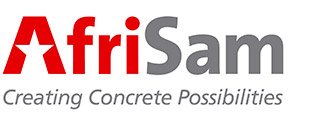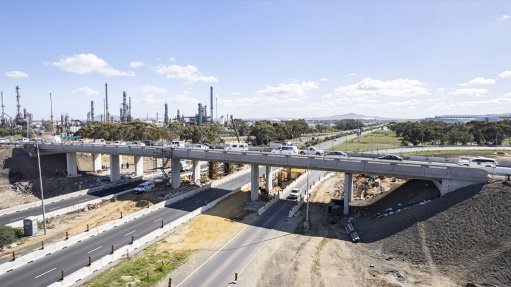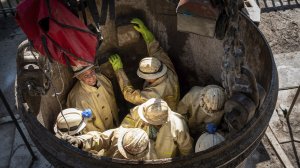

Cape Interchange upgrade gets AfriSam treatment




Apart from extending the width of the bridge, the height has also been raised
The readymix is supplied from AfriSam’s Contermanskloof plant, with back-up plants nearby in Woodstock and Belville
One other element of the project is the realignment of the interchange’s five access ramps to suit them to the upgrade bridge structure
Since July 2021, well-established Cape contractor Haw & Inglis Construction has been proceeding apace on the upgrade of Cape Town’s Refinery interchange, supported by construction materials from AfriSam.
The project is due for completion in early 2024, delivering two new higher and wider bridges over the busy N7 highway – a new road-over-rail bridge alongside the existing bridge which receives rehabilitation works and the upgraded access ramps among the key achievements.
Leiton Chan, Construction Manager at Haw & Inglis Construction, highlights that due to capacity and height limitations of the existing bridge, the new bridges double the capacity and provide an additional 1,7 m clearance from the existing bridge for vehicles travelling on the N7. To accommodate existing traffic, the westbound carriageway was constructed alongside the existing eastbound carriageway. Once completed, the traffic was diverted onto the new carriageway to complete the eastbound carriageway. The existing bridge was demolished in December 2022 to make space for the new bridge – currently under construction.
“Each bridge deck over the N7 was cast in two, consisting of a dual spine, post tensioned structure,” explains Chan. “The project is currently on schedule, with the estimated completion date for the East bound carriageway bridge over the N7 being August 2023.”
AfriSam is providing around 6,300 m3 of readymix concrete as well as material for layer works, according to Bradley Thomas, Territory Sales Manager at AfriSam. The company is also supplying some 15,000 t of aggregate to the project’s asphalt supplier, Much Asphalt.
“An important application of our readymix was for the piling under the bridges, which required almost 1,500 m3 of high strength 40MPa concrete for this purpose,” says Thomas. “A priority here was to avoid any jointing in the piles, so it was essential that each pour – about 3,5 m3 per pile – was continuous.”
He notes that the decks on the two main bridges over the N7 also require continuous pours, amounting to substantial volumes of 500 m3 of W50 MPa concrete per deck. Placement is carried out using a high capacity 36 m boom placer. The readymix is supplied from AfriSam’s Contermanskloof plant in Durbanville, located 8 km from the site, with support from the company’s other nearby plants at Woodstock and Bellville.
The spreading of supply sources allows for further mitigation of project risk related to readymix deliveries, says Thomas. For instance, large continuous pours leave little room for error, and unforeseen events such as traffic congestion have to be factored into the resource planning.
“On the smaller scale aspects of the project’s readymix requirements, our flexibility also allows us to effectively supply the smaller sub-contractors on the project,” he adds. “We have therefore also been able to play a role in enterprise development, supplying the kerb mix to SMME contractors installing the precast kerbs.”
For the road work, AfriSam is supplying about 50,000 t of aggregate for layer works from its Contermanskloof quarry. According to Chan, Haw & Inglis Construction has been able to incorporate a considerable amount of recycled material in the road fill. He points out that the westbound carriageway fill was made up of in-situ G7 sand material excavated from the bridge and mixed with recycled asphalt product (RAP). The RAP is milled material from the various road contracts conducted by the Western Cape government.
In addition to carefully facilitating the traffic flow through the interchange during construction, the project has also had to navigate underground and overhead services from high voltage power lines and diesel pipes to sewer networks and optical fibre lines, he says. A further environmental priority was not to disturb two small wetlands within the road reserve.




